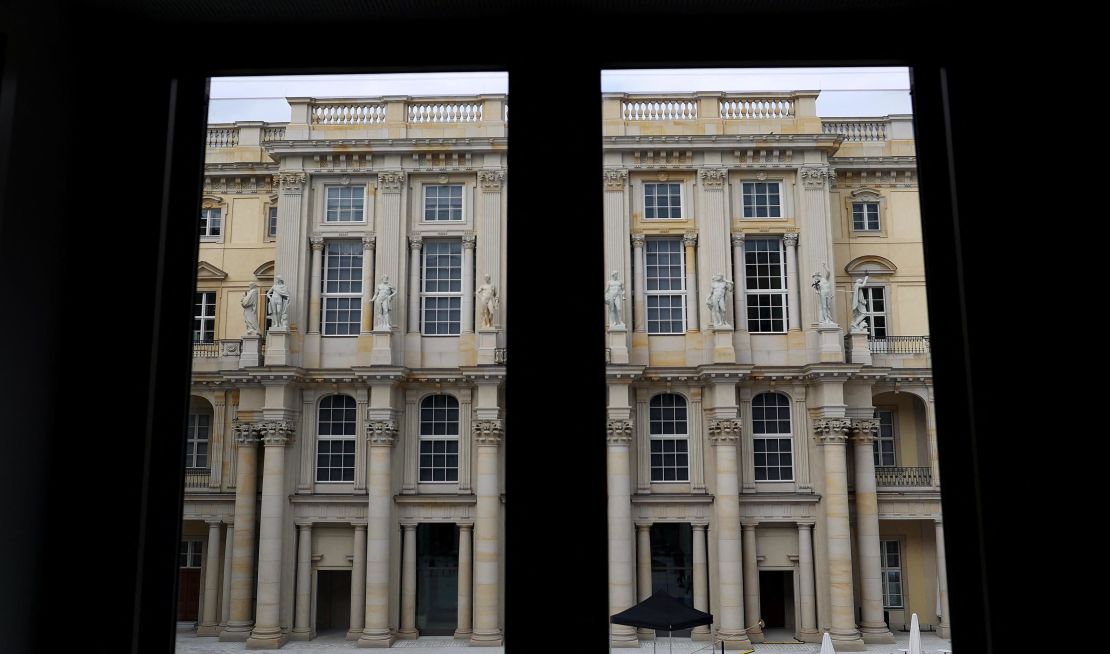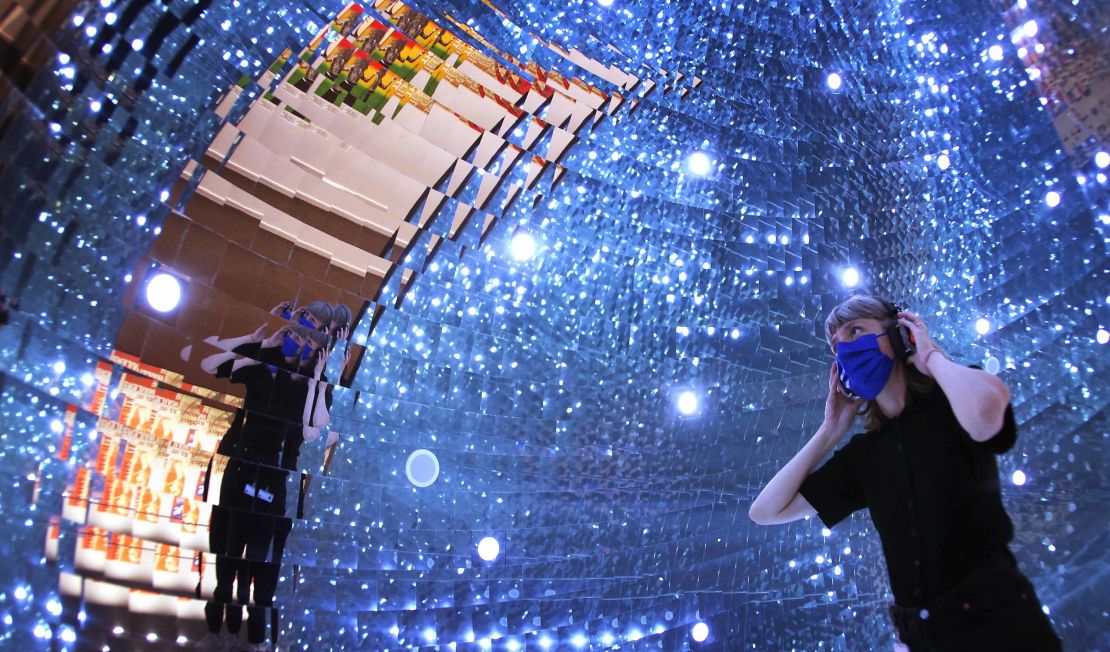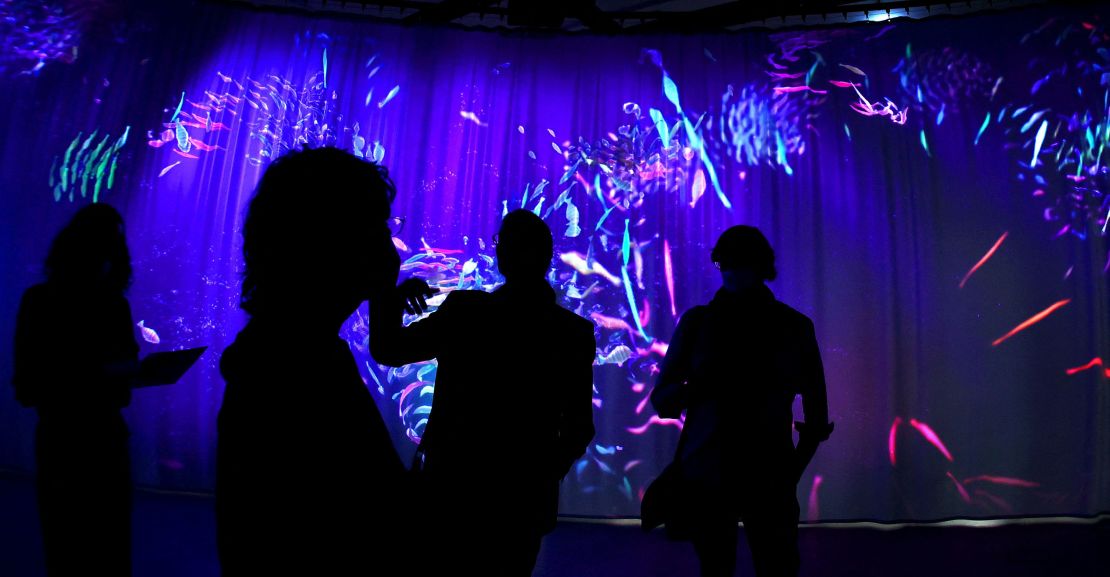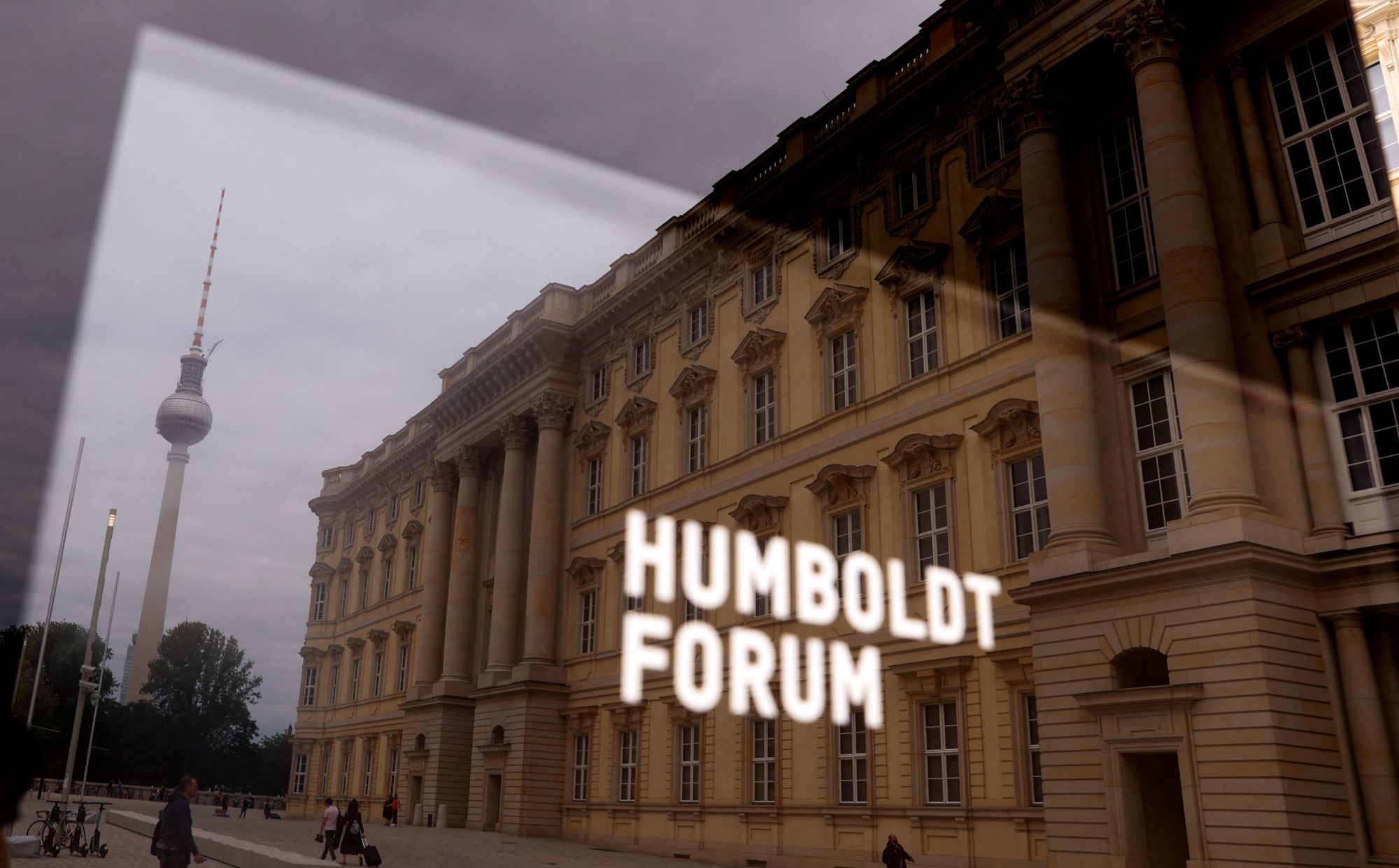Editor’s Note: This article was originally published by The Art Newspaper, an editorial partner of CNN Style.
The Humboldt Forum, a vast new museum complex in a partial reconstruction of the Prussian royal palace in the center of Berlin, opened Tuesday after almost two years of postponements caused first by construction delays, then by Covid-19.
The new cultural complex, whose final budget exceeded 680 million euros (over $800 million), according to a press spokesperson, aims to stage around 1,000 events annually and expects to welcome as many as 3 million visitors a year. While the exterior terrace and courtyards have been accessible to the public since last year, the official opening of the interior in December 2020 had to take place via livestream.
But as the pandemic ebbs and Germany eases restrictions, six exhibitions have now opened on the complex’s first and second floors.

Colonial exploitation
One of the exhibitions, “Terrible Beauty. Elephant – Human – Ivory”, explores the history of the global ivory trade in a program developed by the Berlin State Museums, the Natural History Museum and the National Museums of Kenya. Colonial exploitation, which the show addresses, became the focus of heated debate during the planning and construction of the Humboldt Forum, which will display Berlin’s ethnological collections.
A major science exhibition mounted by the Humboldt University, titled “Humboldt Lab: After Nature,” also opened Tuesday. It explores the impact of climate change and loss of biodiversity on society and democracy. An exhibition geared towards children between the ages of 3 and 10, called “Have a Seat!,” looks at why, when, where and how different groups and societies sit down.
Meanwhile, an interactive permanent exhibition, “Berlin Global,” takes a handful of themes to explore Berlin’s connection with the rest of the world, including revolution, war, entertainment and fashion. A fifth display is devoted to the brothers Alexander and Wilhelm von Humboldt, who gave the complex its name. Born in 1769, Alexander was a naturalist, explorer and geographer, while Wilhelm, two years older, specialized in political theory and the philosophy of language and history.

The basement contains some remains of the historic palace walls and a medieval Dominican monastery, excavated in 2008. An archaeological exhibition examines the history of the site, while fragments of the original palace from several centuries are on show in the Sculpture Hall. A video panorama sweeps across eight centuries of the site’s history, emphasizing that it “has always been a work in progress in the service of power.”
Work in progress
The Humboldt Forum will be a work in progress a little longer: The third and fourth floors of the west wing open in September, with displays of Berlin’s ethnological and Asian art collections. These include a section on Japan featuring a tea house, Chinese imperial art and parts of the African collections. A rooftop restaurant also opens that month.

The third and fourth floors of the east wing, with the rest of the ethnological and Asian displays, will open in the first half of 2022. Among these are sections on the history of the Afro-Brazilian diaspora in the Amazon region, the global diversity of Islam and Southeast Asian theater traditions. A temporary exhibition of the Benin bronzes, which Germany has pledged to restitute to Nigeria, is also planned.
Over the summer months, a number of dance performances, film screenings, concerts and lectures are scheduled, as well as an open-air festival in the Schlüterhof courtyard.
Top image: The German capital’s landmark television tower and the rebuilt Berlin Palace which houses the Humboldt Forum.
Read more stories from The Art Newspaper here.
